Research
Check out our academic publications, policy reports, and working papers. Browse all of our work, or search by topic or type.
Page 2 of 3
Race, geography, and school choice policy: A critical analysis of Detroit students’ suburban school choices
The purpose of this study is to advance our thinking about race and racism in geospatial analyses of school choice policy. To do so, we present a critical race spatial analysis of Detroit students’ suburban school choices. To frame our study, we describe the racial and spatial dynamics of school choice, drawing in particular on the concepts of opportunity hoarding and predatory landscapes. We find that Detroit students’ suburban school choices were circumscribed by racial geography and concentrated in just a handful of schools and districts. We also find notable differences between students in different racial groups. For all Detroit exiters, their schools were significantly more segregated and lower quality than those of their suburban peers. We propose future directions for research on families’ school choices as well as school and district behavior at the intersection of race, geography, and school choice policy.
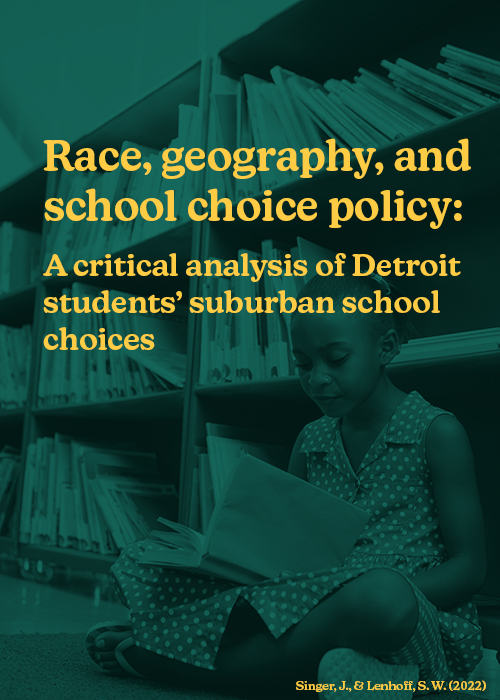
Detroit Families’ Experiences with COVID-19 and School Attendance
How much school students attend is a powerful indicator of their wellbeing and a strong predictor of their future success in school. During the first full school year of the COVID-19 pandemic (2020-21), most Detroit students attended school online and many experienced significant challenges at home and school. This research report summarizes the key findings from a representative survey of Detroit Public Schools Community District (DPSCD) families at the end of that school year. By linking survey responses to students’ attendance records, we were able to identify how experiences during the pandemic and socioeconomic circumstances in general shaped attendance during this critical school year.

School Climate and Student Mobility
School choice has been accompanied by an increase in student mobility. Although changing schools can benefit students, research has shown that it is often associated with negative student and school outcomes. This study sought to better understand the relationship between school climate and the likelihood of student mobility across K-8 schools in Detroit, a city marked by a high level of school choice options. We found conflicting evidence of a relationship between measures of school climate as measured by the 5Essentials survey and student mobility. We discuss these findings in the context of potential sector differences, which may overshadow parental preferences for organizational characteristics.

The Potential for Improvement Science and Research Partnerships to Maximize the Policy Relevance of School Improvement Research
Increased demands by policymakers for evidence-based practices and rigorous impact evaluations in education offer researchers an unprecedented opportunity to influence policy. Yet, academic research has an infamous reputation for not addressing the real problems of policy and practice, being difficult to understand, and being slow to adapt to changing circumstances in implementation. The increasing complexity of the educational policy landscape threatens to exacerbate the disconnect between researchers and policymakers. Researchers interested in school improvement cannot be content to describe and critique these processes. This book chapter describes our approach to policy-engaged research partnerships and the role of improvement science in internal and external work processes.
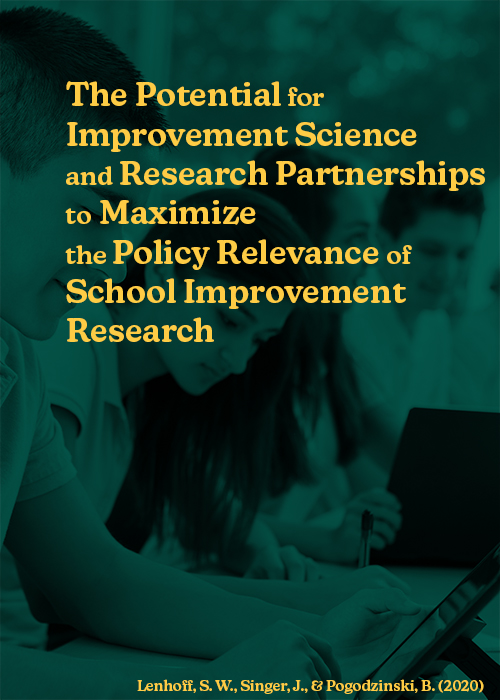
Third Grade Reading and Attendance in Detroit
Potential student retention under the Read by Grade Three Law is a critically important issue to better understand and address in Detroit. Detroit students have historically been retained at much higher rates than their suburban peers. Nearly 15% of Detroit third graders would have been subject to retention under the Third Grade Reading law had it been in effect in previous years. There is a significant relationship between third grade reading scores and chronic absenteeism.

Why do Detroit Students Miss School? Implications for Returning to School
This report documents the reasons why Detroit students miss school, based on interviews with parents and high school students in 2020. Transportation was by far the most frequent and pervasive barrier to attendance that we heard from families. Yet, issues with getting to school were more complex than immediate access to transportation. They emerged from a combination of unreliable or inconsistent availability of transportation, weak social networks, parents’ work schedules, unsafe conditions, and more. Health issues, acute and chronic physical health issues in particular, but also mental health and parent health issues, created barriers to attendance. Parents expressed a strong understanding that missing school jeopardized students’ learning, and they went to great lengths to get their children to school. Parents also weighed serious trade-offs between attendance, safety, health, and family income, reflecting the unjust conditions they face.
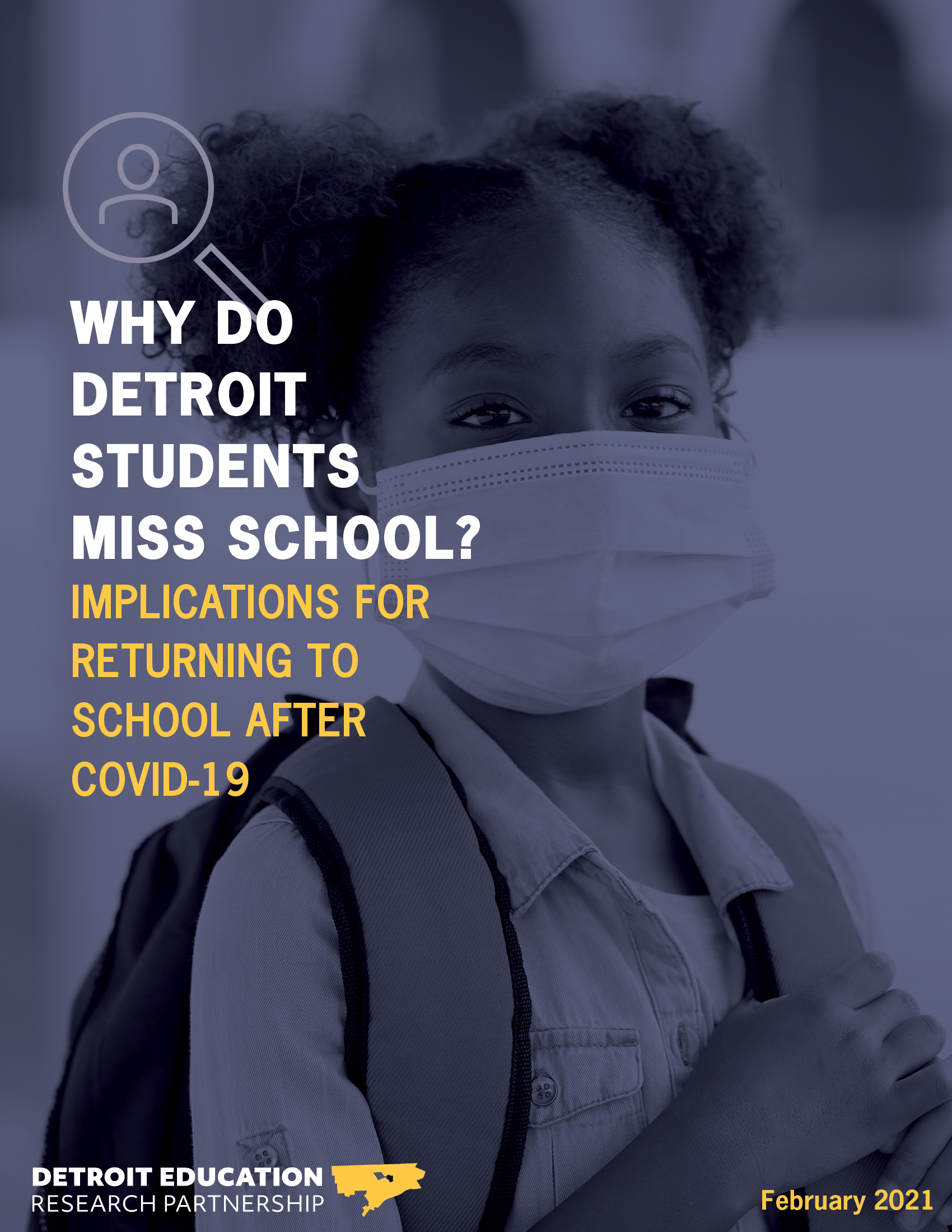
Advancing an Ecological Approach to Chronic Absenteeism: Evidence from Detroit
Drawing on ecological systems theory to study chronic absenteeism, the authors identify the association between student, neighborhood, and school factors and chronic absenteeism in Detroit, as well as between macro-level structural and environmental conditions and city-wide chronic absenteeism rates in large U.S. cities. The authors’ findings suggest the need for coordinated, ecosystemic policy interventions that address structural and environmental barriers to attendance along with school-based efforts that more immediately support students and their families.
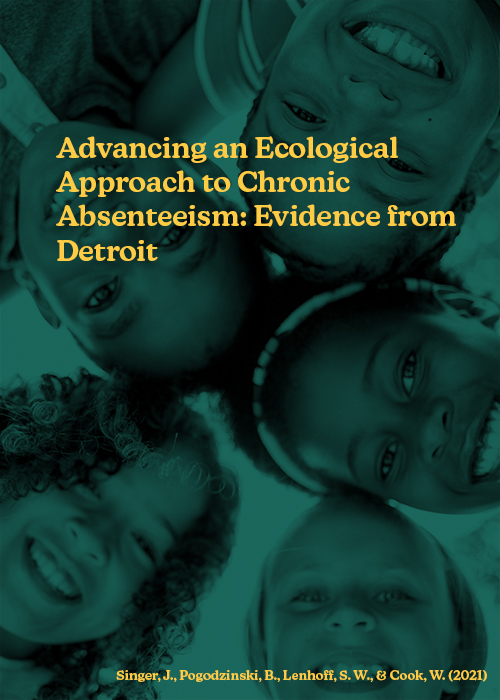
A Collaborative Problem-Solving Approach to Improving District Attendance Policy
Collaborative problem-solving research approacheshave the potential to support improvement in educational policy and practice beyond instruction, by facilitating the development of a shared understanding of complex problems and creating social structures where district, community, and research partners can work together to solve them. This study investigates how findings from a developmental evaluation of a district attendance initiative were incorporated into the initiation process of a networked improvement community to create a shared narrative about how members conceptualized the problem of absenteeism and how they should adapt their levers to better align to that problem. The developmental learning process created an infrastructure within which district leaders and community partners could develop a partnership culture that facilitated change in policy. This study suggests the need to revisit the assumptions that have driven non-instructional improvement efforts and highlights the potential of collaborative problem-solving to strengthen the implementation of district reforms.

Unregulated Open Enrollment and Inequitable Access to Schools of Choice
In severing the link between residential address and school assignment, school choice policies have the potential to decrease school segregation and increase educational equity. Yet, this promise is undermined when school choice creates greater opportunity for those who are already privileged while limiting access to students from historically marginalized groups. This study combines data from a new survey of local open enrollment policies in Metro Detroit, student-level administrative records, and geographic data to critically analyze the local discretion provided in Michigan’s interdistrict school choice policy in relation to the goals of access to schools of choice, desegregation, and educational equity. I find that local school districts implement provisions of state policy in ways that restrict access to Black and economically disadvantaged students while creating pathways of opportunity for others. Districts are incentivized to implement these restrictions because of the inequities built into the state school funding formula and the racialized geography of Metro Detroit that is mechanized in district and county boundaries to restrict access. This study has implications for the regulation of local school choice markets and the role they play in increasing equitable public school opportunities.

The Potential for Multi-Site Literacy Interventions to Reduce Summer Slide Among Low-Performing Students
Despite the evidence that summer learning loss or “slide” can have devastating cumulative effects on student performance in school, there are few examples of system-wide interventions that can prevent summer learning loss at scale in urban contexts with high rates of low-performing students. This study reports on the first year of a city-wide effort to reduce summer literacy loss in Detroit, Michigan, through a multi-site collaboration between the city Parks and Recreation Department, the local public school district, and several unique program providers. Results from this pilot study suggest that short-duration, high-intensity tutoring may help to prevent learning loss in literacy among a population with high rates of socio-economic disadvantage and low initial performance, regardless of specific program methodologies. This study has implications for other large cities seeking to prevent summer slide by building on existing municipal and district infrastructure.
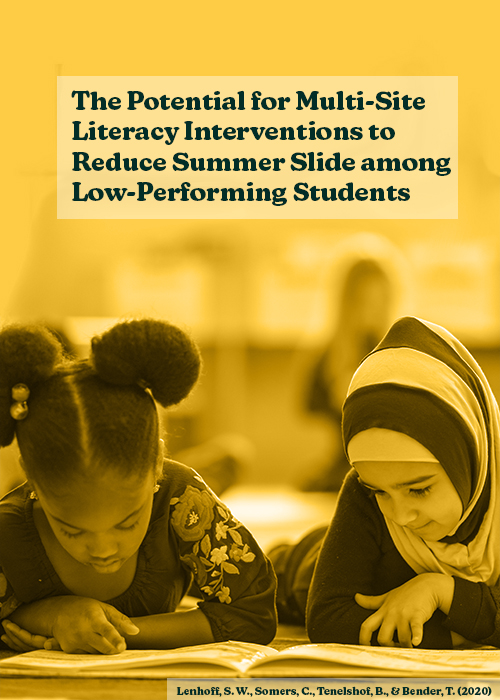
Detroit Students’ Experiences During the Novel Coronavirus Pandemic
We interviewed 29 DPSCD high school students in May and June 2020 about their experiences with COVID-19, how often and in what ways they participated in distance learning, and what their perspectives were about school in the fall. This research brief highlights several key findings that have implications for how students can be supported both during and after the pandemic.

School Transportation Policies in Detroit
A patchwork of different school transportation policies exist in Detroit, with some schools offering traditional school busing, some offering shuttle-style buses, some offering subsidized public transportation, and many offering no transportation at all. This report documents the available school-based transportation for Detroit students in DPSCD and charter schools.

Attendance Throughout the Seasons in the Detroit Schools Community District
This study examines how changes in the seasons relate to student absenteeism in Detroit. The probability that a student will miss school was lowest in the Fall, higher in Winter and Spring, and the highest in Summer (June), with exceptionally high rates of absence in the last two weeks of school. Nearly 4,000 DPSCD students (about 7%) reached the threshold for chronic absence in the last two weeks of the school year. Heavy precipitation in the Winter was associated with a 5% increase in the probability that a student would be absent, but the effect of precipitation in the Fall and Spring was minimal. Weather had a stronger affect on chronically absent students than non-chronically absent students.

Detroit’s Uniquely Challenging Context for Student Attendance
Nationwide, long-term population change, asthma rates, poverty and unemployment rates, residential vacancy rates, violent crime rates, average monthly temperature, and racial segregation for a city’s greater metropolitan area are all significantly correlated with city-wide rates of chronic absenteeism. Detroit has the highest chronic absenteeism rate in the country (about 50%), and it has a uniquely challenging context for student attendance. Among cities with 500,000 or more residents, Detroit has the highest adult asthma rate (14%), unemployment rate (about 20%), poverty rate (about 38%), violent crime rate (about 20 per 1,000 people), and residential vacancy rate (27%). In addition, it has the greatest population loss since 1970 (about 50% decline), one of the lowest average monthly temperatures (about 49° F), and is among the most segregated major metropolitan areas in the country.

Geography, School Type, and High Student Attendance in Detroit
Detroit’s high attenders missed an average of just 2 days a year and performed significantly better on ELA and math standardized tests than non-high attenders, even those missing an average of 9 days a year. Nearly 70% of Detroit’s high attenders were enrolled in “high attendance schools,” or the top third of schools by attendance rate. Just 8% of high attenders were enrolled in “low attendance schools.” Most of Detroit’s high attenders were enrolled in “commuter” charter schools downtown and in the Detroit Public Schools Community District’s application- or exam-based schools, traveling farther on average than non-high attenders to enroll in school.



